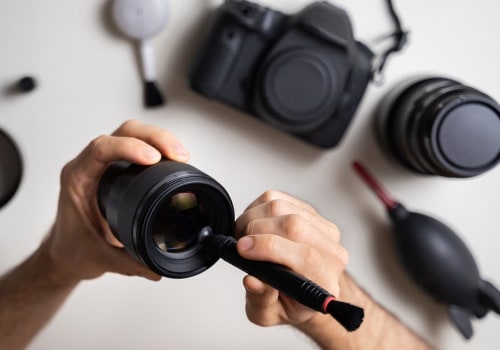Are you considering taking a photography class or workshop but are unsure whether to attend in-person or online? With the advancement of technology, more and more learning options are available for those interested in photography. But which option is the best for you? In this article, we'll compare the pros and cons of both in-person and online classes and workshops to help you make the best decision.
In-Person Classes and Workshops
In-person classes and workshops offer a variety of benefits that are not available when learning online. The most significant benefit is the face-to-face interaction with the instructor, which can be invaluable for developing your skills. In-person classes also provide a chance to network with other photographers and build relationships with mentors.Additionally, the physical presence of the instructor makes it easier to ask questions and get feedback in real time. On the other hand, in-person classes and workshops can be more costly than online learning due to travel expenses and class fees. Furthermore, they often require taking time away from work or other commitments, which can be difficult to manage. Finally, classes may not always be available in your area, making them less convenient than online learning.
Online Classes and Workshops
Online classes and workshops have a number of advantages that make them an attractive option for learning photography.For starters, they are usually more affordable than in-person classes because there are no travel or class fees. Additionally, they are far more convenient, as you can take them from anywhere with an internet connection. Furthermore, they often offer a variety of course materials that can be accessed on demand, making it easier to review concepts and revisit topics at any time. However, there are some drawbacks to online classes and workshops as well.
It can be harder to build relationships with instructors and peers when learning online, and it can be difficult to get feedback on your work in real time. Additionally, it can be easy to get distracted by other tasks when learning remotely, making it harder to stay focused on the course material.
Comparing Cost, Quality of Instruction, and Convenience
When comparing in-person and online classes and workshops, one of the biggest factors is cost. In-person classes tend to be more expensive due to travel expenses and class fees, while online classes are usually much more affordable.However, it’s important to note that the cost should not be the only factor when deciding which learning environment is right for you. Another key factor to consider is the quality of instruction. In-person classes tend to offer better quality instruction because of the face-to-face interaction with the instructor and the ability to ask questions in real time. Online classes can also offer good quality instruction if the instructor is experienced and knowledgeable about the subject matter. Finally, convenience is another important factor when choosing a learning environment.
In-person classes require taking time away from work or other commitments and may not always be available in your area. Online classes offer far more flexibility and can be accessed from anywhere with an internet connection.
Tips for Choosing the Right Learning Environment for You
When choosing between in-person and online classes and workshops, it’s important to consider all of the factors mentioned above. Think about your budget, the quality of instruction you’re looking for, and your availability before making a decision. Additionally, it’s a good idea to read reviews of both types of courses before signing up to get an idea of what others have experienced. It’s also worth considering what type of learner you are when deciding which environment is right for you.If you prefer the structure of a classroom setting with plenty of interaction with an instructor, then an in-person class may be a better option. On the other hand, if you prefer having more flexibility and control over your learning schedule, then an online class may be a better fit. Ultimately, the best way to decide which learning environment is right for you is to try both types of courses and see what works best for you. Experimenting with different formats can help you find the one that best fits your needs and allows you to learn effectively.
Pros and Cons of In-Person Classes and Workshops
In-person classes and workshops can be a great way to learn about photography, as they offer the opportunity to receive personalized instruction from an experienced teacher. However, there are some drawbacks to this type of learning environment.Here, we'll explore the pros and cons of taking an in-person class or workshop.
Pros:
- The ability to ask questions directly to an instructor who is right in front of you.
- The opportunity to get individualized feedback from the instructor.
- The chance to get hands-on experience with equipment that may not be available online.
- The ability to learn from your peers and benefit from their experiences.
- The need to travel to the class or workshop, which can be costly and time consuming.
- The potential for distractions from other students or the instructor.
- The cost of the class or workshop itself, which may be more expensive than taking an online class.
Pros and Cons of Online Classes and Workshops
Online classes and workshops offer a variety of advantages and disadvantages when compared to in-person instruction. On the plus side, online classes often offer flexibility, as they can be accessed from anywhere in the world. Additionally, many online classes are more cost-effective than traditional in-person classes, allowing students to save money. Furthermore, online classes are often more structured and organized than in-person classes, making it easier for students to stay on track.However, there are also drawbacks to taking online classes and workshops. One of the main issues is the lack of face-to-face interaction with instructors and other students. Additionally, online classes often require more self-discipline and motivation in order to stay focused and complete the coursework. Finally, some online courses may not offer the same level of quality as in-person classes due to the lack of personal instruction.
Comparing Cost, Quality of Instruction, Convenience, etc.
When it comes to cost, in-person classes and workshops tend to be more expensive than online ones. This is due to the fact that the cost of the instructor’s time, materials, and other expenses must be covered by the students. In addition, there may be additional travel or lodging costs for attending in-person classes. On the other hand, online classes can be much more affordable, since they don’t require any additional expenses. The quality of instruction is one of the most important factors to consider when choosing between in-person and online classes.In-person classes tend to provide more personalized attention, since the instructor can answer questions and provide feedback in real time. Online classes may also provide valuable instruction, but it may be less personal since the instructor is not present to respond to questions. In addition, some online classes may have less rigorous expectations or grading policies. The convenience of attending classes is another important factor. With in-person classes, you are limited by location and availability of instructors.
You may need to travel to attend a class or workshop or wait for a session to start at a certain date and time. Online classes are much more convenient since they can be accessed from anywhere with an internet connection and can be completed at your own pace. When comparing in-person and online classes and workshops, it’s important to consider all of the factors mentioned above. Each option has its own set of pros and cons, so it’s important to decide which learning environment is the best fit for your photography journey.
Tips for Choosing the Right Learning Environment for You
Deciding between an in-person or online class or workshop can be a difficult choice. It is important to consider factors such as your learning style, the cost of the course, and the topics covered.Here are some tips for choosing the right learning environment for you:Consider Your Learning Style:The first step in deciding which learning environment is right for you is to consider your learning style. Do you prefer a more hands-on approach or a more theoretical approach? Are you able to stay focused in a virtual classroom or do you need the structure of an in-person class? Answering these questions will help you decide which type of class or workshop is best for you.
Understand the Cost:
The cost of a class or workshop can vary greatly between in-person and online options. Online classes are typically less expensive since they do not require travel or onsite costs. However, some in-person classes may offer additional benefits such as personal instruction and access to resources that can be difficult to find online.Know What Will Be Covered:
It is important to understand what will be covered in the class or workshop before making your decision.Some classes may offer detailed instruction on specific topics while others may provide a more general overview. Make sure to research each class thoroughly before signing up so that you know what to expect.
Ask Questions:
Finally, if you are still unsure about which option is best for you, it is a good idea to contact the instructor or organizers of the class or workshop and ask questions. This will give you a better understanding of what to expect and help you make an informed decision. This article has compared in-person and online classes and workshops. Each option has its own set of advantages and disadvantages, such as cost, quality of instruction, convenience, and more.When choosing the best learning environment for your photography journey, it's important to consider all of these factors and weigh them against your individual needs and goals. With the right approach, you can choose the perfect learning environment that will help you reach your goals in photography.








